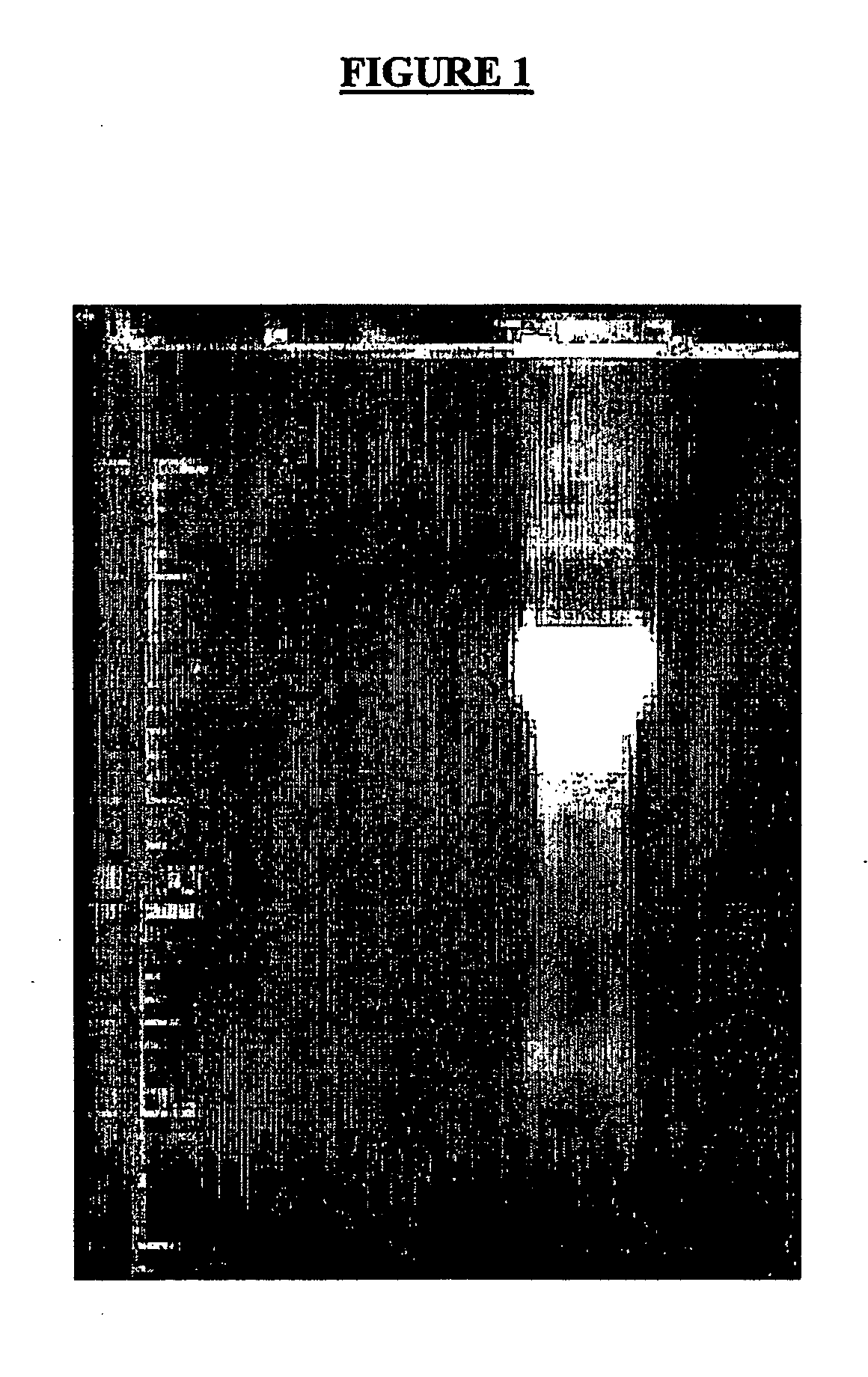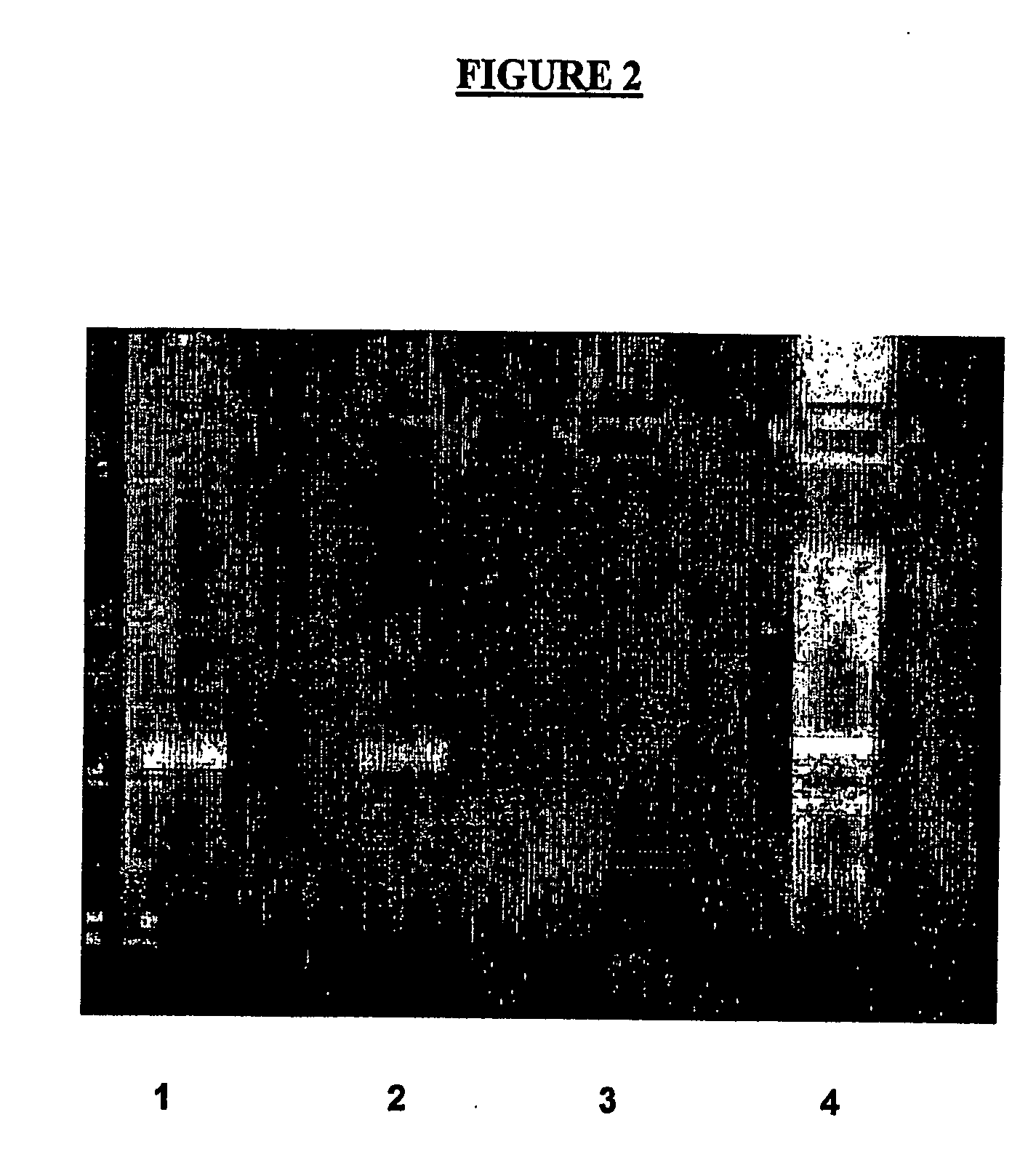Kunitz-type recombinant inhibitor
a recombinant inhibitor and kinetolytic technology, applied in the field of kinetolytic inhibitors, can solve the problems of uncompletely cleared up uncontrollable increase, and inability to completely clear up the regulation mechanism of cellular multiplication of tumoral cells, and achieve the effect of increasing the phagocytic activity of macrophages
- Summary
- Abstract
- Description
- Claims
- Application Information
AI Technical Summary
Benefits of technology
Problems solved by technology
Method used
Image
Examples
example 1
mRNA Obtainence
[0304]The total RNA integrity extracted from the salivary glands of the A. cajennese tick was verified in agarose gel in presence of formaldehyde (FIG. 1).
example 2
mRNA Isolation
[0305]For the isolation of the mRNA, 48 ul of total RNA was diluted in 500 ul of 10 mM Tris buffer in presence of ImM EDTA and submitted to the oligo (dT) cellulose affinity column. 17.28 ug of mRNA was obtained. The ratio A260 / 280 for the mRNA was 1.71 (ug / ul). The extracted mRNA, free of degradation products, was used for the construction of the cDNA library (FIG. 2).
example 3
The Construction of the cDNA Library
[0306]By selection in agarose gel from the cDNA library with inserts larger than 800 pb.
[0307]Some aleatory clones were selected and digested with Eco RI and Hind III and a variety of different size inserts was presented (FIG. 3).
PUM
| Property | Measurement | Unit |
|---|---|---|
| pH | aaaaa | aaaaa |
| volume | aaaaa | aaaaa |
| volume | aaaaa | aaaaa |
Abstract
Description
Claims
Application Information
 Login to View More
Login to View More - R&D
- Intellectual Property
- Life Sciences
- Materials
- Tech Scout
- Unparalleled Data Quality
- Higher Quality Content
- 60% Fewer Hallucinations
Browse by: Latest US Patents, China's latest patents, Technical Efficacy Thesaurus, Application Domain, Technology Topic, Popular Technical Reports.
© 2025 PatSnap. All rights reserved.Legal|Privacy policy|Modern Slavery Act Transparency Statement|Sitemap|About US| Contact US: help@patsnap.com



